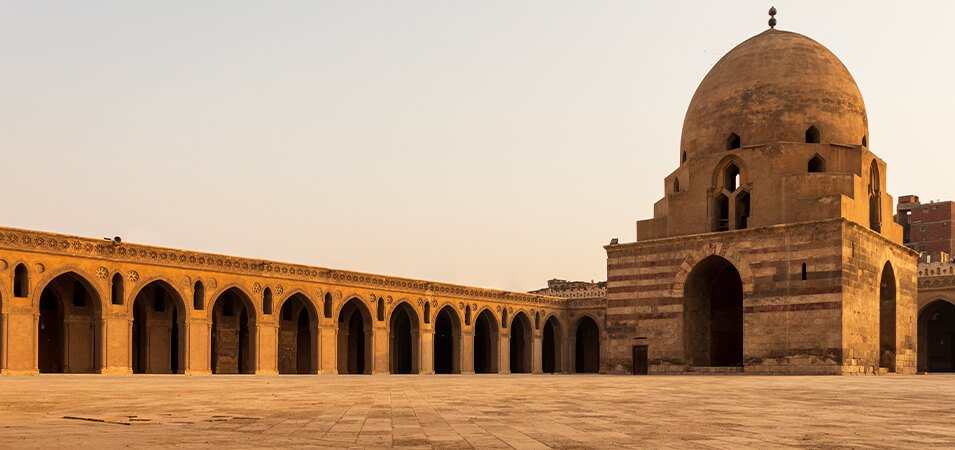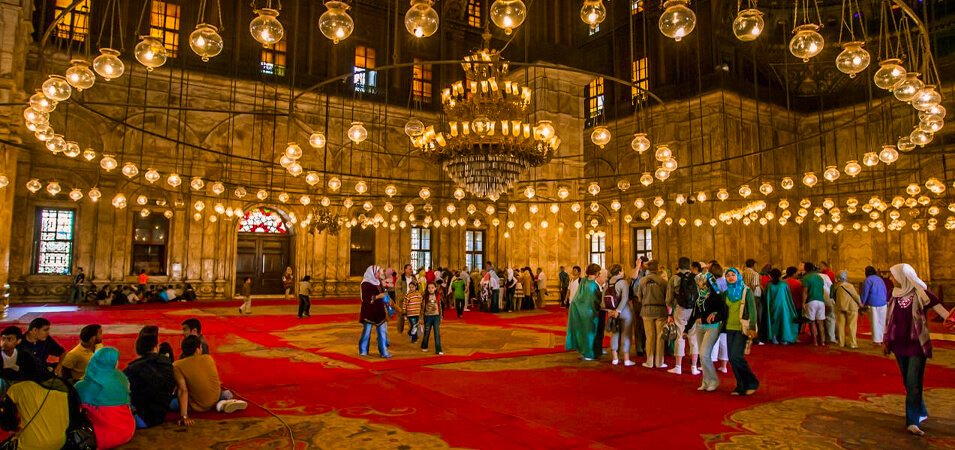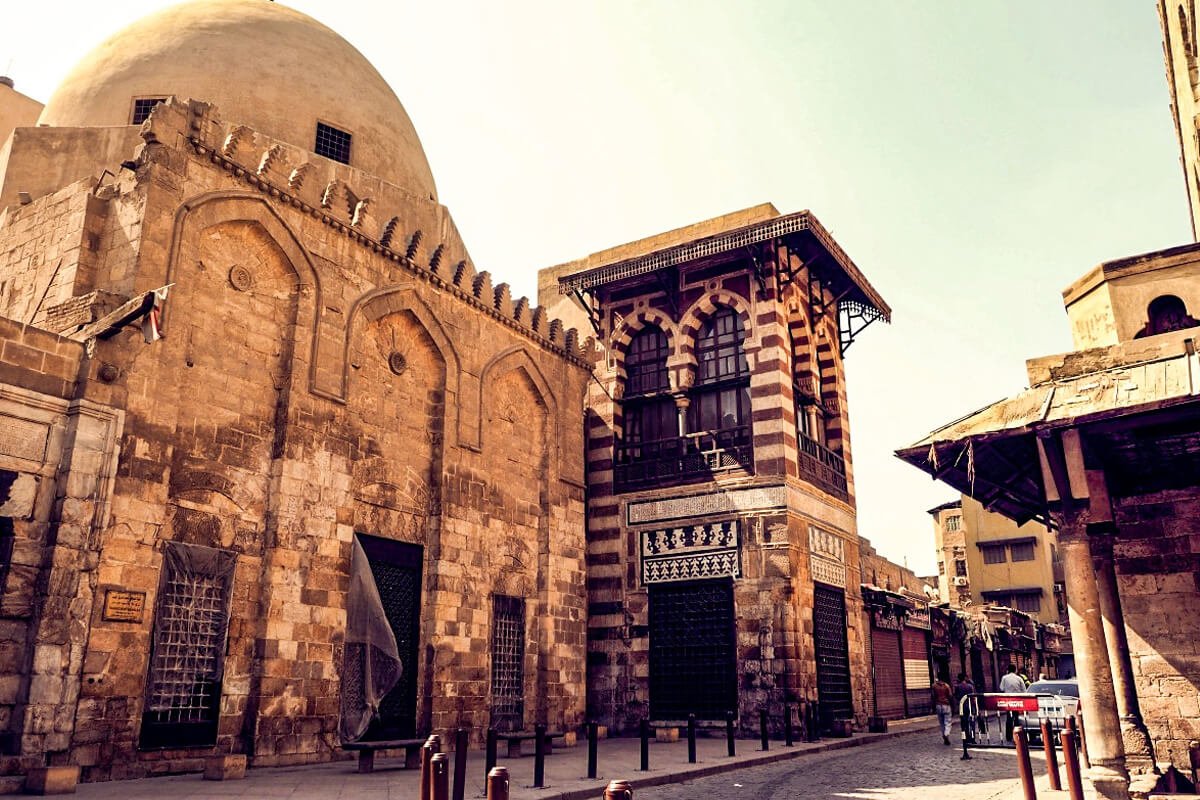Introduction: A Living Museum of Medieval Islamic Civilization
Islamic Cairo stands as one of the world’s most remarkable open-air museums. This UNESCO World Heritage site preserves over 1,000 years of Islamic architectural heritage in stunning detail. Medieval minarets pierce the sky above bustling bazaars. Ancient madrasas echo with centuries of scholarly debate. Every stone tells stories of sultans, scholars, and craftsmen who shaped the Islamic world.
The historic district spans four square miles of concentrated magnificence. Fatimid palaces, Ayyubid citadels, and Mamluk masterpieces create an unparalleled architectural timeline. Walking these streets transports visitors to the golden age of Islamic civilization. The air carries incense from mosques, spices from souks, and whispers of history itself.
Beyond monuments, Islamic Cairo pulses with living culture. Artisans still practice medieval crafts their ancestors perfected. Call to prayer resonates from 600 active mosques. Local families inhabit houses older than European cathedrals. This isn’t a static museum – it’s a breathing testament to Islamic Cairo historical sites that continue shaping modern Egypt.
The Magnificent Mosques and Monuments
1. Al-Azhar Mosque: The Beacon of Islamic Learning
Founded in 970 AD, Al-Azhar represents the heart of Sunni Islamic scholarship worldwide. The Fatimid dynasty established this mosque-university to spread their influence across the Islamic world. For over a millennium, Al-Azhar has produced Islamic scholars, judges, and theologians who shaped religious thought from Morocco to Indonesia.
The mosque’s architecture reflects centuries of additions and renovations. Original Fatimid elements blend seamlessly with Mamluk modifications and Ottoman enhancements. Five minarets crown the complex, each representing different architectural periods. The main prayer hall accommodates 20,000 worshippers during Friday prayers.
- Must-see: The original Fatimid courtyard with its distinctive arches
- Student life: Watch theology students debating in traditional circles
- Respect: Dress modestly and remove shoes before entering
- Timing: Visit between prayers for peaceful exploration
2. Ibn Tulun Mosque: Cairo’s Architectural Marvel

Built in 879 AD, Ibn Tulun Mosque showcases pure Abbasid architecture in remarkable preservation. Ahmad ibn Tulun commissioned this masterpiece to demonstrate his independence from Baghdad’s caliphate. The mosque’s unique design incorporates elements from Samarra, creating Cairo’s most distinctive Islamic monument.
The mosque covers six and a half acres, making it one of the largest in the world. Its walls rise without a single piece of wood – a testament to medieval engineering brilliance. The spiral minaret, Cairo’s only external spiral, draws inspiration from Mesopotamian ziggurats. Pointed arches predate European Gothic architecture by centuries.
- Hidden detail: The spiral minaret’s 40-meter climb offers stunning city views
- Architecture: Notice the unique pointed arches and geometric patterns
- Photography: Best light occurs during golden hour before sunset
- Guided tours: Available through the adjacent Gayer-Anderson Museum
3. The Citadel of Saladin: Cairo’s Iconic Fortress

Built in 1176 AD, this hilltop complex dominated Cairo’s skyline for centuries. Saladin the Great constructed this fortress to protect Cairo from Crusader attacks. The citadel served as Egypt’s seat of power for 700 years, hosting Ayyubid sultans, Mamluk rulers, and Ottoman governors.
The fortress encompasses multiple palaces, mosques, and military installations. Muhammad Ali’s alabaster mosque dominates the complex with its Ottoman-inspired domes and minarets. The citadel’s strategic position provides commanding views over Cairo’s sprawling metropolis. Medieval gates and towers still guard ancient secrets within massive stone walls.
- Must-see: Muhammad Ali’s alabaster mosque with its stunning interior
- Photo spot: Panoramic city views from the eastern ramparts
- Avoid: Midday heat – bring water, hats, and comfortable shoes
- Combo ticket: Includes access to multiple museums and exhibitions
4. Sultan Hassan Mosque: Mamluk Architectural Supremacy
Completed in 1363 AD, Sultan Hassan Mosque represents the pinnacle of Mamluk-era craftsmanship. Sultan Hassan ibn Qalawun invested enormous resources creating this architectural masterpiece. The mosque’s imposing facade and soaring interiors demonstrate Mamluk power at its zenith.
The building incorporates a innovative cruciform plan with four iwans surrounding a central courtyard. Each iwan accommodated different schools of Islamic jurisprudence. The main mihrab showcases intricate marble inlay work and Quranic calligraphy. Twin minarets originally flanked the entrance, though one collapsed in the 16th century.
- Marvel at: The 68-meter high entrance portal and bronze doors
- Interior highlights: Marble mihrab and suspended glass mosque lamps
- Historical note: Construction cost nearly bankrupted the Mamluk treasury
- Best view: Photograph from the Citadel for impressive scale comparison
5. Al-Rifa’i Mosque: Royal Burial Ground
Built between 1869-1912, Al-Rifa’i Mosque houses Egypt’s modern royal tombs. Khedive Ismail commissioned this neo-Mamluk masterpiece to complement the neighboring Sultan Hassan Mosque. The building combines 19th-century engineering with traditional Islamic architectural elements.
The mosque serves as the final resting place for Egypt’s last royal family. King Fuad I, King Farouk’s family members, and the last Shah of Iran lie within its walls. The interior dazzles with imported marble, gilded decorations, and crystal chandeliers. Modern construction techniques enabled the massive dome and spacious prayer halls.
- Royal tombs: Visit the elaborate burial chambers of Egyptian royalty
- Architecture: Compare neo-Mamluk style with authentic medieval examples
- Crystal chandeliers: Admire the imported European decorative elements
- Historical significance: Site of important state ceremonies and royal events
Hidden Gems and Cultural Treasures
6. Bayt al-Suhaymi: Medieval Merchant Mansion
This 17th-century merchant’s house exemplifies Ottoman-era domestic architecture. The al-Suhaymi family transformed their residence into a showcase of wealth and sophistication. Multiple courtyards, fountains, and mashrabiya screens create a private urban oasis.
The house demonstrates ingenious medieval climate control. Wind catchers and water features naturally cool interior spaces. Separate male and female quarters reflect Islamic social customs. Intricate woodwork and painted ceilings showcase master craftsmen’s skills.
- Architectural features: Study the mashrabiya wooden lattice screens
- Cooling system: Notice the natural air conditioning via wind catchers
- Cultural performances: Evening concerts occasionally held in courtyards
- Photography: Interior courtyards provide excellent architectural shots
7. Mosque of Muhammad Ali: The Alabaster Masterpiece

Completed in 1857, this Ottoman-style mosque crowns the Citadel complex. Muhammad Ali Pasha commissioned this monument to rival Istanbul’s greatest mosques. The building’s distinctive silhouette defines Cairo’s eastern skyline.
Turkish architects designed the mosque following classical Ottoman principles. The central dome reaches 52 meters in height. Two slender minarets frame the main entrance. Alabaster panels cover interior walls, earning the nickname “Alabaster Mosque.”
- Dome interior: Marvel at the painted decorations and natural lighting
- Muhammad Ali’s tomb: Visit the founder’s marble sarcophagus
- City views: Terrace offers spectacular panoramas of Islamic Cairo
- Comparison: Notice Ottoman differences from Mamluk mosque designs
8. Al-Muizz Street: The Golden Road of Islamic Cairo

This kilometer-long street boasts the world’s densest collection of medieval Islamic architecture. UNESCO recognized Al-Muizz Street as humanity’s greatest open-air museum of Islamic art. Every building represents a different period of Islamic Cairo’s golden ages.
The street connects Bab al-Futuh to Bab Zuweila, forming medieval Cairo’s main thoroughfare. Fatimid palaces, Ayyubid monuments, and Mamluk complexes line both sides. Modern restoration projects have revealed hidden architectural treasures.
- Look for: Intricate mashrabiya wooden screens on upper floors
- Time right: Evening visits when traditional shops and lighting come alive
- Walking tour: Follow the marked heritage trail with information plaques
- Nearby treat: Try traditional sweets at historic El-Hussein Cafe
9. Bab Zuweila: Guardian of Medieval Cairo
Built in 1092 AD, Bab Zuweila served as medieval Cairo’s southern gate. This Fatimid fortification controlled access to the city’s heart. Twin minarets from the adjacent Mosque of al-Mu’ayyad crown the ancient gateway.
The gate witnessed countless historical events. Public executions occurred beneath its arches. Victory celebrations passed through its portals. The last Mamluk sultan was hanged from its towers in 1517.
- Climb up: Ascend the minarets for unique street-level photography
- Historical significance: Learn about medieval Cairo’s defensive systems
- Architecture: Study Fatimid stonework and construction techniques
- Street life: Experience the bustling Khan el-Khalili bazaar nearby
10. Al-Ghouri Complex: Mamluk Sunset Glory
Built in 1504-1505, this complex represents the final flowering of Mamluk architecture. Sultan al-Ghouri constructed his mosque, madrasa, and mausoleum just before Ottoman conquest ended Mamluk rule. The buildings showcase sophisticated late-medieval Islamic art.
The complex includes innovative architectural features rarely seen elsewhere. A covered bridge connects the mosque and madrasa across al-Muizz Street. Intricate stone carving and geometric patterns reach new levels of refinement.
- Unique feature: The bridge connecting buildings across the street
- Evening performances: Traditional Sufi whirling ceremonies held regularly
- Architectural details: Study the refined late-Mamluk decorative elements
- Cultural center: Active programs promoting traditional Islamic arts
Conclusion: Embracing Cairo’s Islamic Heritage
Islamic Cairo historical sites offer an unparalleled journey through medieval Islamic civilization. These monuments preserve artistic achievements that influenced architecture from Spain to Central Asia. Every visit reveals new details, hidden meanings, and forgotten stories.
Beyond individual buildings, Islamic Cairo demonstrates how faith, culture, and commerce shaped urban development. The district’s narrow streets follow medieval patterns. Traditional crafts continue in workshops unchanged for centuries. Modern Cairenes maintain customs rooted in Islamic tradition.
Planning multiple visits allows deeper appreciation of this complex heritage. Each season offers different perspectives. Ramadan brings special spiritual atmosphere. Winter provides comfortable exploration weather. Spring reveals hidden gardens and courtyards.
The magic of Islamic Cairo extends beyond famous monuments. Discovering neighborhood mosques, traditional coffeehouses, and artisan workshops enriches understanding. Local residents share family stories spanning generations. These personal connections transform historical sites into living experiences.
Experience Islamic Cairo with an expert guide – book your cultural tour today! Professional guides unlock hidden histories, explain architectural significance, and ensure respectful site visits. Cultural tours support local communities while preserving this irreplaceable heritage for future generations.
Islamic Cairo awaits your exploration. These timeless streets hold centuries of human achievement. Every step reveals new wonders. Every visit deepens appreciation for Islamic civilization’s enduring contributions to world culture.
Check out our other articles:

